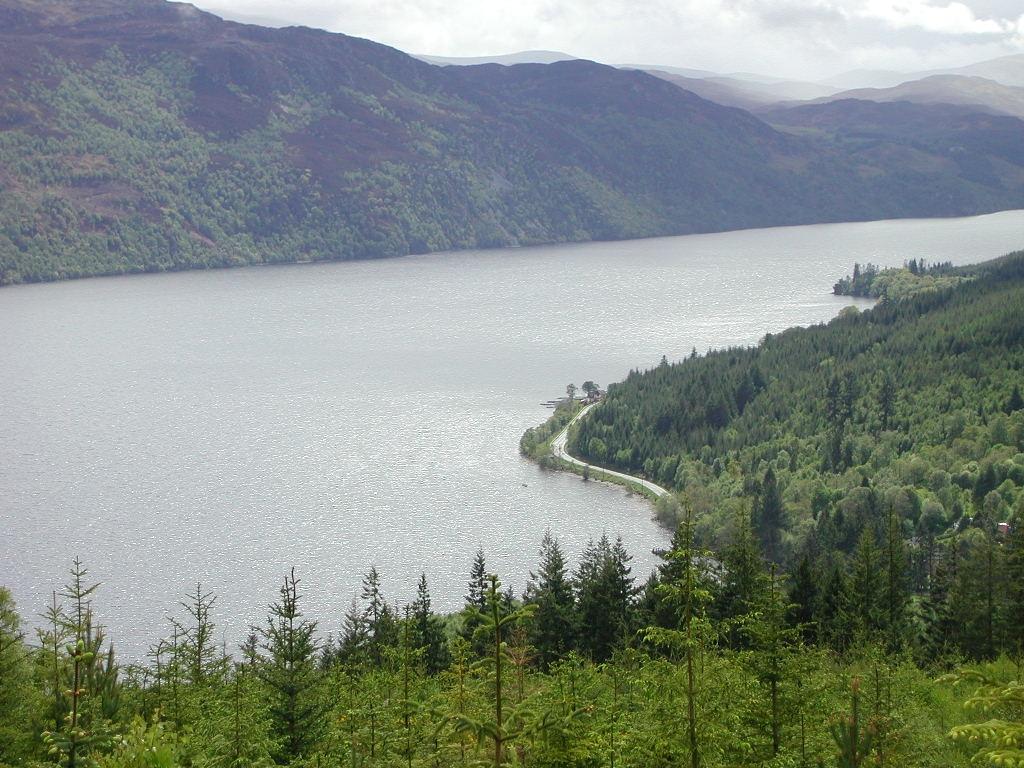Cryptozoologist explains his studies of mysterious creatures — like the Loch Ness Monster
Loren Coleman, one of the world’s leading cryptozoologists, explores the mysterious sea creatures seen in Loch Ness. (Photo courtesy of Riccardo Speziari via Wikimedia Commons.)
Loren Coleman makes a living investigating creatures whose existence has not yet been proven.
Coleman is one of the world’s leading cryptozoologists, working to uncover animals whose existence is disputed or unsubstantiated. Some 68 years ago, the first photo of the Loch Ness monster was shot and published in a U.K. newspaper. But the mystery continues.
According to Coleman there’s not just one Loch Ness Monster, yeti, or mysterious creature, but rather, an entire population exists. In the book he cowrote, “The Field Guide to Lake Monsters, Sea Serpents, and Other Mystery Denizens of the Deep,” Coleman said the population probably doesn’t live in Loch Ness, either.
“There’s lots of sightings; there’s lots of history there, but for them to actually be in Loch Ness all the time — there’s some trouble with that. It is a narrow lake,” Coleman said.
He said people often forget there have been more than 40 land sightings where the Loch Ness Monster has seemed to travel across land.
“The ocean is only one mile from Loch Ness, so we may actually have Loch Ness as a reservoir of creatures that occasionally come there to either take a vacation, to breed, or to just look for more food in the Loch Ness area,” Coleman said.
Coleman said he doesn’t believe the popular notion that the sea creatures are large, prehistoric marine reptiles.
“What we have going on in Loch Ness and in a lot of these northern latitude lakes seems to be some varieties of long-necked seals that are very rare. They are mostly unseen and undocumented because they do stay underwater, and they’re very fast, and they also cross land,” Coleman said.
Many of the land sightings occurred in the 1920s and ‘30s, as the lake was revealed through land changes and deforestation, Coleman said.
“We do have people that have very good records of large objects that are moving quite rapidly there. We also have the Tim Dinsdale film that shows a large object that looks like the back of a whale, and some other pictures that are pretty inconclusive, but they certainly show a large animate object there,” Coleman said.
In addition to photographic evidence, Coleman said there is also sonar evidence from Operation Deep Scan, an expedition in Loch Ness that used sonar technology to find the Loch Ness Monster. It was reported that scientists had sonar contact with a large, unidentified object at the bottom of the lake.
“They actually did get some sonar bounces back, even though the way they wrote up the material, it sounds like they didn’t find anything. So you have to read deeper in some of these official reports to find that sometimes, if people are going there with a very skeptical, debunking point of view. Even when they do find evidence that’s inconclusive, or maybe is marginally conclusive, it’s oftentimes written up to ridicule that evidence and say that it was just an unknown,” Coleman said.
Coleman explained that cryptozoology is really the collected testimonials and the physical evidence of these creatures.As soon as the creatures become known, and the species are captured, they become part of zoology.
This has occurred with many new species that have been discovered, that had been seen, but not yet classified.
“There’s new sharks, new beaked whales, and new manta rays being found all the time, that local natives will know about, but Western scientists won’t,” Coleman said.
Coleman also noted that there have been Russian sightings of a giant sea cow in the Arctic seas, dinosaur reports in the Congo, which may actually be an aquatic variety of rhinoceros, and sightings of a perhaps 60-feet long sea centipede near Vietnam.
In Utah, there were also reports of the existence of a 14-foot long beaver.
“There seems to be a historical memory of this giant beaver. If you look at reports from the 1850s, 1860s, there’s actual living memory among members of the Mormon Church of these giant beaver existing in the lakes of Utah,” Coleman said.
He believes that a new creature will be discovered in the next decade.
“It’s a foregone conclusion. We know that new beaked whales are still being discovered. I have hopes that the giant octopus, which, of course, are very well hidden in some of these deep holes in the Bermuda area — that some kind of a revelation will come there. Science is really trying to explore the oceans more. The oceans are the best field for data,” Coleman concluded.
